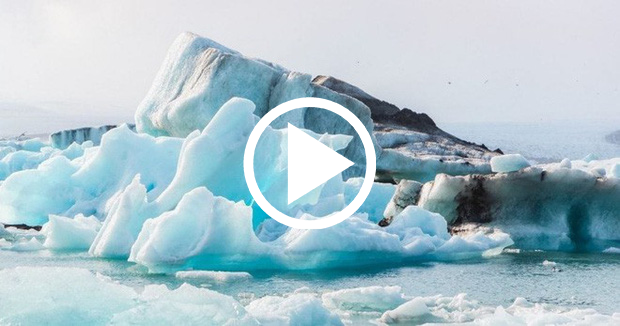The most recent research presented to the General Assembly of the European Geoscience Union shows that radioactive debris stored in glaciers can in fact become a time bomb.
The area of terrestrial glaciers is shrinking rapidly. Recent research shows that the rate of glacial melt is 18 percent higher than expected and five times higher than in the 1960s.
This phenomenon has many consequences: destruction of polar bear habitat; causing sea level rise; climate change in the wrong direction; and make old diseases reappear.
And now, the melting glaciers have emerged as another issue that worries us. That’s a huge amount of nuclear dust buried in Earth’s giant ice cap.
“Radioactive Iceberg” looks like a shady conspiracy hidden behind the Earth disaster in the movie Geostorm. And yet, the most recent research presented to this year’s European Geoscience Union General Assembly shows that radioactive debris stored in glaciers can in fact turn into a time bomb.
Principal researcher Caroline Clason, University of Plymouth, said: “Previous studies of nuclear accidents have only focused on their impacts on human health and ecosystems in different regions of the world. is not frozen. But evidence suggests that cryoconite on glaciers can accumulate radioactivity to potentially dangerous levels. “
This is the first time that an international team of researchers has embarked on an analysis of the nuclear content of Arctic and Antarctic glaciers; simultaneously in the Alps, the Caucasus Mountains, British Columbia and Iceland. Levels of radioactive material of human origin were studied at 17 sites. As a result, glacial radioactivity concentrations were on average 10 times (or more) higher than in non-glacial sites.
The explanation for this result is the release of radioactive particles after nuclear disasters like Chernobyl or Fukushima. These particles are light and can fly very far.
Usually, they return to the soil as acid rain, where they can be taken up by the soil or consumed by plants. As a result, radiation concentrations are higher in places like Chernobyl and Fukushima. At the same time, cancer rates, infertility rates have increased, and the existence of radioactive pigs has emerged. Some of these particles, however, will travel to the poles, where they fall as snow, fall on ice, form heavy sediment, and accumulate in denser concentrations.
The team analyzed the nuclear composition of the glacier. And they not only found nuclear dust from the Chernobyl and Fukushima disasters, but they also found material from decades of other nuclear weapons testing.
“We are talking about weapons testing from the 1950s and 1960s, a time in the development of bombs and heavy weapons,” Ms.
While research shows that radioactive material in the food chain is definitely not good for us, the team still doesn’t know what the presence of this nuclear fallout means. The team hopes to understand its impact.
Ms Clason said: “Very high concentrations of radionuclides have been found in several recent field studies, but we do not yet know their exact impact. environment and downstream communities. We need to find all the invisible threats they might face. To come up. “


